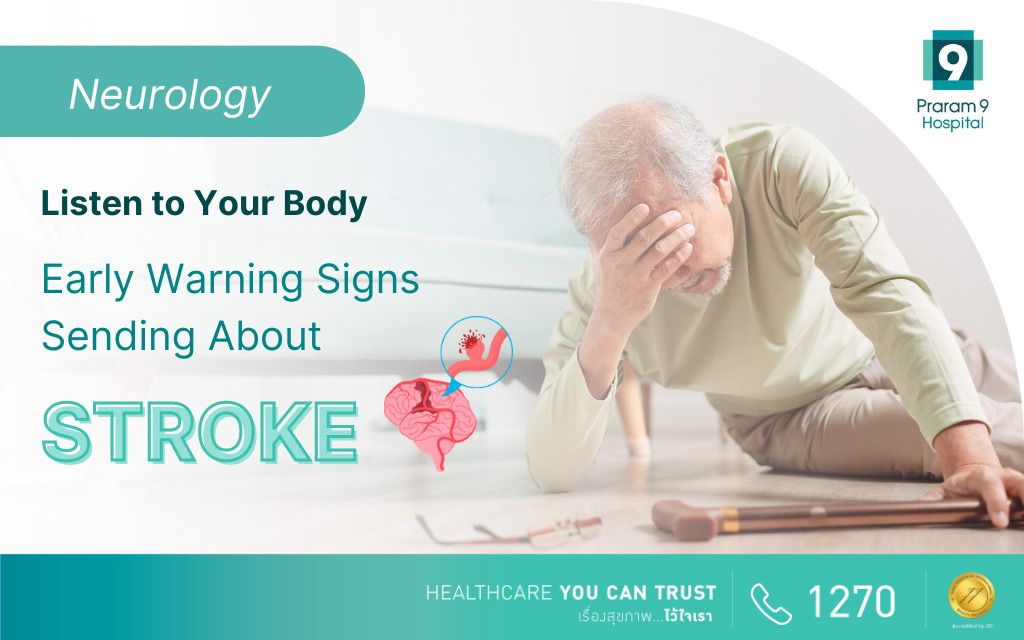Health Articles
Knowledge
Early Warning Signs Your Body Might Be Sending About Stroke

Introduction:
Stroke, a formidable adversary to human health, strikes abruptly and often with devastating consequences. A cerebrovascular accident, or stroke, occurs when the blood supply to the brain is interrupted, leading to damage or destruction of brain cells. In this extensive guide, we embark on a journey to unravel the intricacies of stroke—exploring its causes, symptoms, various treatment modalities, and crucially, strategies for prevention.
Understanding Stroke
A stroke is a medical emergency that demands immediate treatment. Two primary types of strokes exist: ischemic strokes, caused by a blockage in blood vessels, and hemorrhagic strokes, resulting from vessel rupture that cause bleeding within the brain.
How Stroke Occurs?
Understanding the mechanisms of a stroke is crucial. Ischemic strokes often come from the formation of blood clots or plaques that obstruct blood flow to the brain. Hemorrhagic strokes often come from the rupture of blood vessels, leading to bleeding in the brain.
Causes and Risk Factors
Modifiable Risk Factors
Various lifestyle and health-related factors contribute to the risk of stroke. High blood pressure, smoking, diabetes, high cholesterol, and obesity are among the modifiable risk factors that can address through proactive lifestyle changes.
Non-Modifiable Risk Factors
Certain risk factors, such as age, gender, and family history, are out of control. Understanding these non-modifiable factors is crucial for assessing overall stroke risk and developing targeted preventive strategies.
Recognizing Stroke Symptoms
The Importance of Early Recognition
Prompt recognition of stroke symptoms is paramount for initiating timely medical intervention. Key indicators include sudden numbness or weakness, confusion, trouble speaking or understanding speech, difficulty walking, and severe headaches.
The FAST Method
The FAST method—Face, Arms, Speech, Time—is a common technique that widely used to quickly identify potential stroke symptoms. Educating oneself and others on these indicators can be lifesaving.
Diagnosis and Emergency Treatment
Diagnostic Procedures
Diagnostic procedures, including imaging tests such as CT scans or MRIs, are essential for confirming diagnosis. These tests aid healthcare professionals to determine the type and severity of brain damage.
Emergency Treatment
The urgency in treating strokes is emphasized by the golden hour principle (not exceed 3 hours and prolong up to 4.5 hours). For ischemic strokes, clot-busting medications like tissue plasminogen activator (RTPA) are administered, while hemorrhagic strokes may require surgery to stop bleeding and repair damaged vessels.
Advanced Stroke Treatments
Thrombectomy
Thrombectomy, a groundbreaking procedure, involves the mechanical removal of blood clots from cerebral arteries. This innovative approach has extended the treatment window for eligible patients, showcasing remarkable results in improving outcomes. This treatment should be managed within 24 hours
Rehabilitation and Post-Stroke Care
Recovery from a stroke is a multifaceted process. Rehabilitation programs including physical therapy, occupational, and speech therapy help patients recover lost skills. Emotional and psychological support is also a crucial part for both patients and their caregivers.
Medications and Preventive Measures
Medications for Stroke Prevention
For individuals at risk or those with a history of strokes, medications play a pivotal role in managing underlying conditions. Antiplatelet drugs, anticoagulants, and medications to control blood pressure and cholesterol are common components of preventive strategies.
Lifestyle Modifications
Preventing strokes involves addressing modifiable risk factors through lifestyle changes. A heart-healthy diet, regular physical activity and smoking cessation contribute significantly to long-term vascular health.
Conclusion
In conclusion, stroke is a complex and formidable medical condition that demands comprehensive understanding and proactive measures. From recognizing symptoms and seeking emergency treatment to embracing innovative procedures and adopting preventive lifestyles, the battle against strokes is multifaceted. Armed with knowledge, individuals and healthcare professionals alike can navigate this challenging terrain, working towards a future where strokes are not just treatable but also increasingly preventable.














